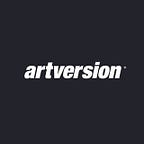Agency Perspective: Iterative Design Is Good Design
Iterative design occurs organically. It defines the design process and is a natural part of nurturing the client relationship and delivering the best possible experience. Rarely will a design hit the mark the first time around, so understanding your team’s intellectual and professional approach to executing further iterations will prepare you and the client for the work ahead. The beauty of the process is that it represents progress, allows designers to course correct, and creates learning opportunities throughout. Iterative design is intentional and methodical, but within the framework there are endless questions and related discoveries that allow for a variety of design directions to form. It’s also interesting in the way that it is encompassed in each design sprint, with each step being revisited throughout the process, and therein lies the value of the iterative approach.
Planning & Research
This first step, the planning phase, of iterative design establishes the foundation for the trajectory of the project. Time and time again, professionals express the value of research to kick off brand UX/UI design as part of the scope of work. This involves dedicating time to analyzing the client’s industry with the most up-to-date research and trends, as well as sharing a solid understanding of their existing data and target audiences. If the client is able to secure feedback from their users or members, take full advantage of the opportunity to understand their insights. Some of our most revealing and productive conversations with our partners result from presentations of our research findings and analysis, where we explore the data and apply it to the intangible sentiment and creative outputs. Utilizing these discoveries and developing a creative brief will establish the Who, What, When, Where and Why, and ultimately the How; thus the design iterations can begin.
The Blueprint
Once you have a foundational grasp on the client’s goals and ideas for a creative first approach, you can develop a strong prototype and determine if this version is satisfying the principles of good user-centered design. Doing this early and formally through wireframing and presentation of user-flow allows the client to understand what you’ve initially gleaned from the planning phase and how it translates into the iterative process. It also encourages your designers to articulate their ideas and support their rationale to the team as well as the client, and understand what is possible. This brings you closer to the details of while offering the space to take several steps back throughout to see how the minutia aligns with the bigger picture.
Testing The Creative Output
Much can be taken for granted on the client or designer side in terms of assumptions that are made, even unknowingly, about the audience that will be engaging with the digital design. Testing the first, and indeed each, iteration and measuring it against user data and feedback is one of the most revealing steps in the iterative design process. If it’s a ground-up project, data can be received and analyzed after the design is launched and at various intervals going forward. Site pages created for existing clients can be revisited in the months following the go-live date to determine the effectiveness of the call to action and opportunities for conversion. The importance of testing lies in its ability to ground your assumptions in the reality of what the design does or does not achieve, and illuminates the areas that need tweaking or improvement, and which elements are successful and should remain in place.
Revise & Refine
Iterative design requires listening and understanding, taking feedback and rationalizing your approach, and finding the common ground. Justifying what you propose can be best done with data and research, but that certainly doesn’t take away from the artistry or the intellectual and emotional rationale behind design decisions. Going back to the drawing board is a given, and it is also one of the most collaborative steps for the internal team and the client. The refinement stage is an effort to tailor the piece based on fit, style and need and is an exciting moment to get the design even closer to its best version.
This is the joy and value of iterative design. It opens the opportunity for both teams to meet in the middle and create something more expansive than we may have initially imagined. It’s a learning process and each iteration has the potential to go from strength to strength until you have a piece of work that reaches the audiences initially in mind, as well as those that were identified throughout, and achieves the initial goals identified in the planning phase. Taking the time to organize the workflow, create a framework, test, refine and launch will result in a truly interdisciplinary final work that is measurably successful and one that all parties can be proud of.
